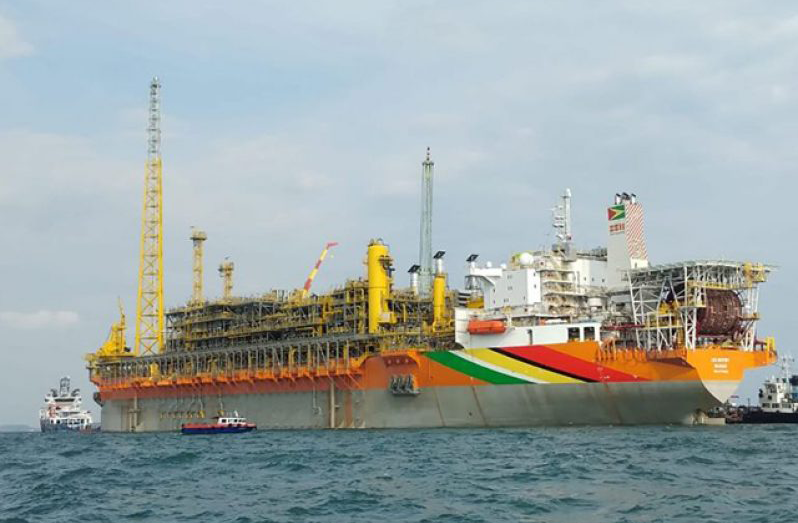THE faulty gas compressor on ExxonMobil’s Liza Destiny Floating Production Storage and Offloading (FPSO) vessel has been repaired and should be installed on the vessel by the end of March, enabling the reduction of the ongoing gas-flaring, according to the company’s Production Manager, Mike Ryan.
This compressor was damaged in January and resulted in the company having to temporarily increase gas-flaring above pilot levels in order to maintain safe operations. Subsequently, the company removed the faulty compressor and sent it for repairs in Germany.

“Our original target that we had estimated was from the failure at the end of January was approximately eight weeks, and we’re on track for that to have the equipment back in Guyana installed and started up in March,” Ryan highlighted.
Additionally, Ryan noted that the personnel who are needed to help with the installation have already been identified and are currently going through the COVID-19 quarantine and isolation guidelines.
In addition to the repairs on the existing equipment, an order has been placed for a new flash gas compressor, which will be available closer to the end of the year, given the complex nature of the equipment.
At the engagement, also, ExxonMobil’s Country Manager Alistair Routledge repeatedly emphasised that the current level of flaring is still within the limits of the permits and licences granted to ExxonMobil.
“Let me assure you, we are very clear what are our obligations, our commitments under our permits, and licences for the operation of the project and we are certainly fully within those limits; we have not exceeded anything, any parameter, anything,” Routledge said, adding: “We have very same systems that enable us to track what are all those commitments and we are absolutely certain that we’re within those.”
Previously, ExxonMobil had said that production levels at its operations offshore Guyana have been reduced in order to accommodate the repair of the defective gas compressor. It was noted that the company continues to produce oil at 120,000 barrels per day, while the current daily levels of flaring are between 16 to 18 million cubic feet.
Ryan, however, noted that reducing production would not necessarily limit the amount of gas that is being flared.
“In order for us to get back to pilot-flaring levels, we need that flash gas compressor or we need to reduce production to zero… that’s just a fact,” Ryan explained.
As such, he indicated, “Our focus right now is getting the machine repaired and it is repaired… and get sent back to Guyana to be installed and get back to that pilot-level flaring.”
Back in 2019, ExxonMobil had explained to the media that for the first period, after ‘first oil’, there would be initial start-up flaring, as authorised by the Environmental Protection Agency (EPA), which occurs during the commissioning and initial start-up phases of the FPSO when gas and liquids are introduced into new facilities and equipment.
This flaring, it said, would not continue as a routine, and will only take place again in the case of an emergency, whereby flaring will be used to immediately de-pressure the facility as part of a shut-down process to reduce risk.
In January, WWF Guianas registered its strong displeasure of the increased flaring via a statement issued to the media. The body lamented that recommencement of flaring defied the company’s global commitment to reduce flaring by about 20 per cent in 2020.
Further, WWF stated, “EEPGL (Esso Exploration and Production Guyana Limited, a subsidiary of ExxonMobil) is undercutting Guyana’s ‘green image,’ making it more difficult for the country to promote and build a sustainable, low-carbon economy.”
Director of WWF Guianas, Dr. David Singh, said pointedly that “the burden of responsibility falls squarely on ExxonMobil. We look forward to the company being held accountable for this development.”
WWF Guianas advocated for a review of future developments of the company’s oil- expansion programme, in light of this recent gas-flaring development and the way it was disclosed.



.jpg)








